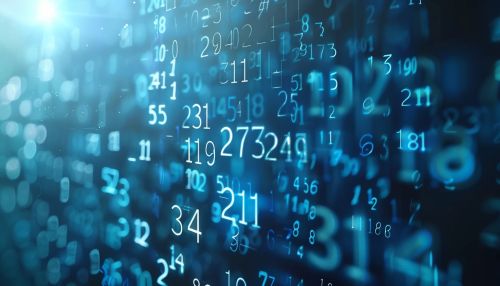Recurrence Relations
Introduction
A recurrence relation is a mathematical construct that defines a sequence of numbers in terms of previous members of the sequence. This concept is fundamental in various fields of mathematics, including combinatorics, number theory, and differential equations. Recurrence relations also play a crucial role in computer science, particularly in the analysis of algorithms.


Definition
Formally, a recurrence relation for the sequence {a_n} is an equation that expresses a_n in terms of one or more of the previous terms a_n-1, a_n-2, ..., a_n-k. The order of a recurrence relation is the number k of previous terms in the sequence that the relation requires.
Types of Recurrence Relations
There are several types of recurrence relations, each with unique characteristics and applications.
Linear Recurrence Relations
A linear recurrence relation is a recurrence relation in which each term is a linear function of its preceding terms. The most famous example of a linear recurrence relation is the Fibonacci sequence, where each term is the sum of the two preceding ones.
Homogeneous Recurrence Relations
A homogeneous recurrence relation is a type of linear recurrence relation where the right-hand side of the equation is zero. These relations are often used in the analysis of algorithms, particularly in the field of computer science.
Non-Homogeneous Recurrence Relations
A non-homogeneous recurrence relation is a type of linear recurrence relation where the right-hand side of the equation is not zero. These relations are often used in the study of dynamic systems, such as those found in physics and engineering.
Solving Recurrence Relations
There are several methods for solving recurrence relations, each with its own strengths and weaknesses. The choice of method often depends on the specific characteristics of the recurrence relation.
Iteration Method
The iteration method involves repeatedly applying the recurrence relation to generate terms of the sequence until a pattern is discerned. This method is simple but can be time-consuming for complex relations.
Characteristic Equation Method
The characteristic equation method involves transforming the recurrence relation into a characteristic equation, which is then solved using techniques from algebra. This method is more complex but can provide a general solution for many types of recurrence relations.
Generating Functions Method
The generating functions method involves representing the sequence defined by the recurrence relation as a power series, and then manipulating this series to find a closed-form solution. This method is particularly powerful for solving combinatorial problems.
Applications of Recurrence Relations
Recurrence relations have a wide range of applications in various fields.
Mathematics
In mathematics, recurrence relations are used to define sequences and series, solve difference equations, and study dynamical systems. They are also used in the proof of mathematical theorems, such as the binomial theorem.
Computer Science
In computer science, recurrence relations are used to analyze the time complexity of algorithms, particularly recursive algorithms. They also play a key role in the design of data structures and the development of programming languages.
Physics and Engineering
In physics and engineering, recurrence relations are used to model dynamic systems, solve differential equations, and analyze signals and systems.
